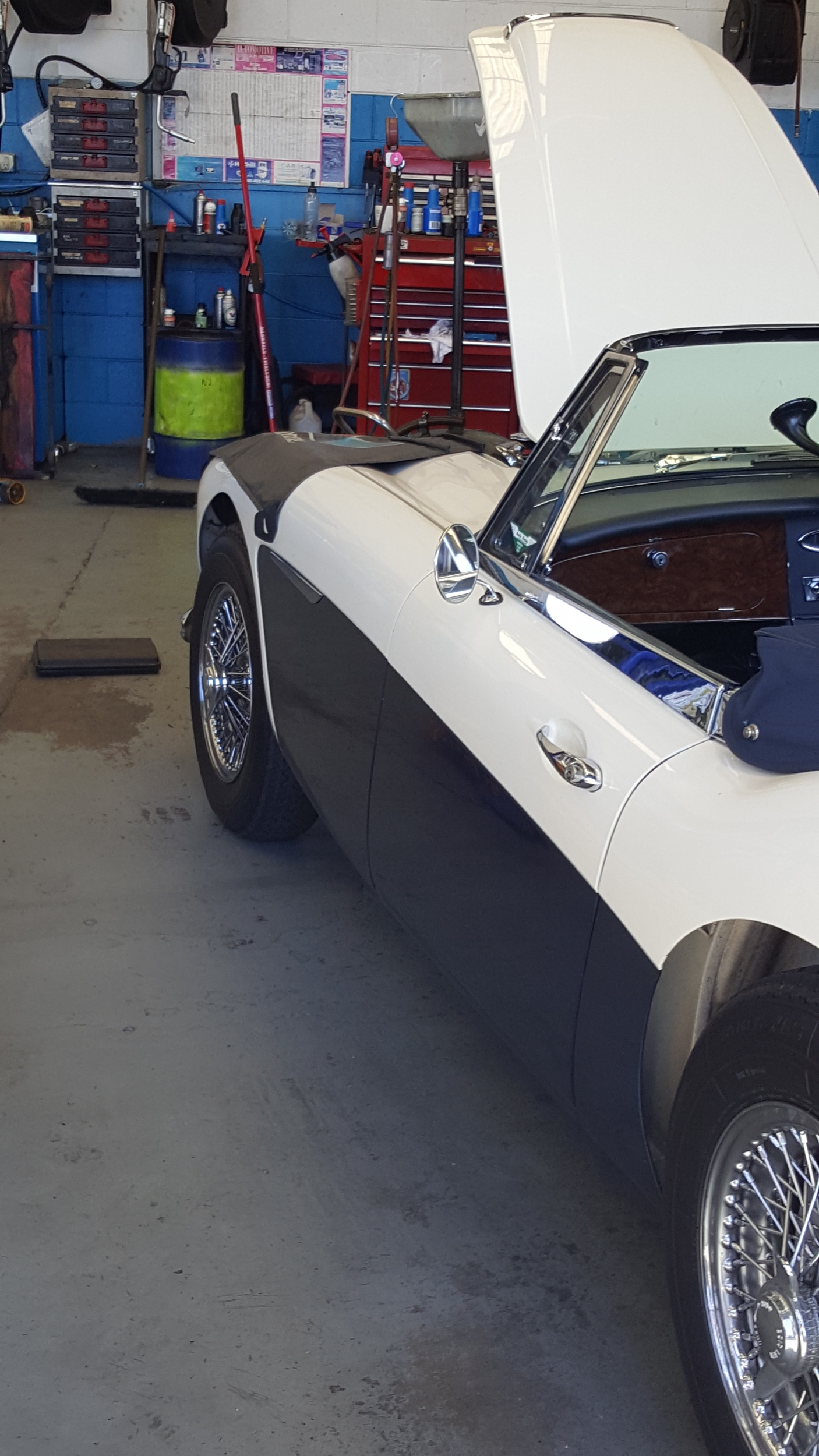Propane as an aircon refrigerant?
by David Baggs
The big picture: I have come to reconcile my passion for Healeys and open top driving by reducing my lifestyle generated climate impacting emissions wherever possible: my everyday drive is now a Tesla (powered during the day by my rooftop photovoltaics and topped up by 100% 'green energy' purchased from the grid), my home and office are 'net carbon positive' and offsetting the rest via tree-planting and nature banking (ask me if you want to know). I rationalise that given all that, my occasional relatively short trips to enjoy the fruits of our labours in restoring my BJ8 are acceptable.
The science of refrigerant impacts: In my professional life as a sustainability consultant, I have come to understand that the refrigerant typically used in cars, R134a, is a low ozone impact refrigerant that replaced earlier more ozone damaging types, but with climate change impacts becoming so much more important, it has become more critical to look at the impact of refrigerants on the atmosphere in all their uses:
- R134a has a greenhouse gas emissions (GGEs) over 1430 times that of Carbon Dioxide (C02), and as many of you will be aware, car air conditioning systems often lose gas.
- Each charge of a car aircon system takes about 1/2 a kilogram of gas, or the equivalent of 685kg of C02.
- In Australia the C02 intensity of the National Grid is approx 1kgCO2/kW, so that is the equivalent of 715kWhrs of energy being expended.
-
Put another way, the 1/2 kilo charge of your typical car airconditioning system discharged to the atmosphere has the equivalent CO2 output as running an average house lighting powered with 20 x 5W, LED powered lights (running for 6 hours a day on average) 7 days a week.... for more than 1.6 years.
Professionally I have been involved in major life cycle impact analyses of large commercial airconditioning systems and have been aware of the existing of natural refrigerants like CO2 (yes you can use it as a refrigerant) and propane for over 20 years since we used R600a (propane refrigerant) in one of the Sydney 2000 'Green games' Olympic projects I worked on. Interestingly the technology and some brands of refrigerator e.g. Leibherr and Miele, have been using R600a quietly for many years because it is more efficient than other refrigerants and I have owned such a Leibherr refrigerator since about 2003 and it has never needed servicing even once. The natural refrigerant I used was Minus 30, a blend of R600a and R290, two naturally occurring hydrocarbon refrigerant gases.
So when I decided in 2017, I would install airconditioning in my Healey restoration, I committed to using R600a propane refrigerant to charge the system. It is what they call a 'drop in' refrigerant, i.e., it is a direct replacement for R134a and so I only needed to find an installed that was licensed to work with it to do the job. Peter Janetzki of JH Classic Car Restorations, restored the bulk of the car and did the aircon install working with his regular aircon guy, but it turns out that QLD is the only State to require special licensing for natural refrigerants and he didnt have one.
In fact while there are literally several tonnes of R600a sold into QLD each year it seems that few licenses exist.


I have discussed this with many people over the years and am surprised by some's negative reaction along the lines "why would you use an inflammable gas under the hood of your car?" I cant really understand their concern, maybe they dont see the irony of the question...all ICE cars are powered by flammable liquids of various flammabiliy and many on liquid propane. The 10s of 1000s of LPG vehicles on the road are safely managed with engineering solutions, the same way the R600 refrigerant is in car air conditioning units.
I eventually solved the problem by taking the completed car and aircon system for a weekday drive to Air Chill Car Air Conditioning in Tweed Heads and drove into their workshop driving out a bit more than an hour or so later fully charged with icy jet blasts of cold air.
There is nothing like those chilled blasts of air on the over-hot 'Healey-legs' and face when stopped at a red light or in traffic on a hot day...an enjoyment that continue to this day (April 2021) especially when knowing it is more planet friendly than the alternative.

More information:
Related pages



